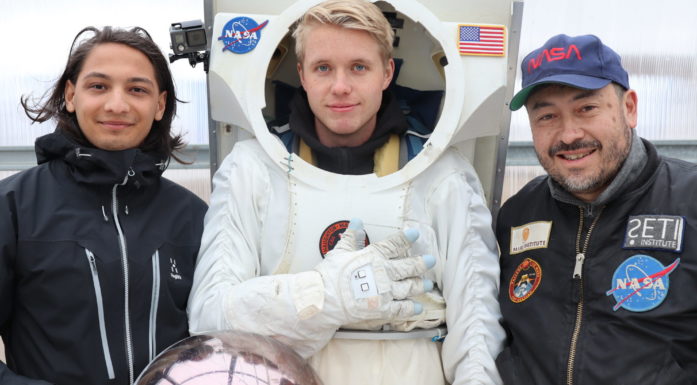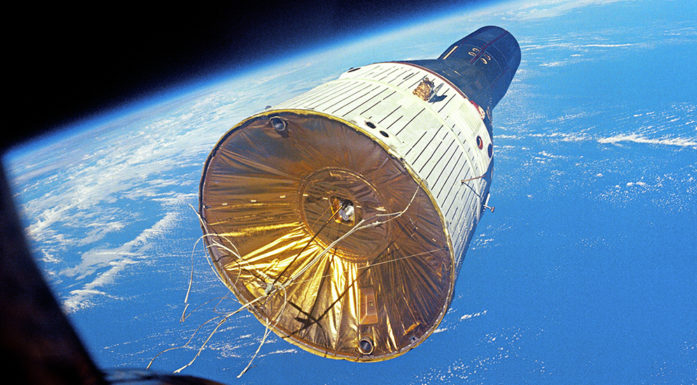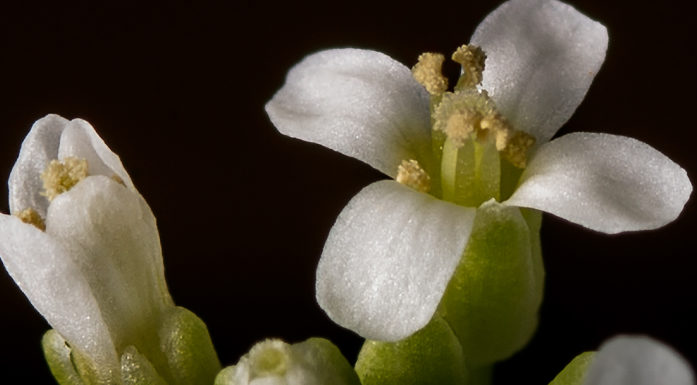Eating your veggies, even in space
Travelling to Mars will require astronauts to grow their own food. NTNU is creating the planters for cultivating veggies in space. Now that researchers have finished lettuce-growing experiments, they’ll be embarking on bean trials.
Fresh food is so attractive to astronauts that they toasted with salad when they were able to cultivate a few lettuce heads on the International Space Station three years ago.
In 2021, beans are on the menu to be grown in space, planted in high-tech planters developed at NTNU.
“The dream of every astronaut is to be able to eat fresh food.”
“Astronauts like gardening and everything that reminds them of life on earth. They enjoy tending and watering the vegetables, and getting them to germinate,” says Silje Wolff, a plant physiologist for CIRiS, the Center for Interdisciplinary Research in Space at NTNU Social Research.
- You might also like: How plants respond to attack
Planting lettuce in lava rock
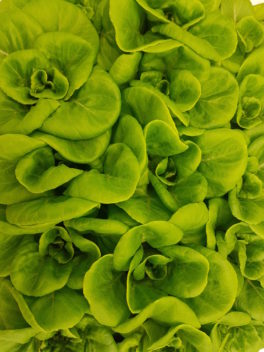
This lettuce was grown in artificial soil created from porous lava rock. The goal is to grow the lettuce hydroponically, by providing all the nutrients and water the plants need without using actual soil.Photo: Silje Wolff, CIRiS
Wolff has just completed an experiment in growing lettuce for space. The lettuce was planted in artificial soil made from lava rock. The goal is for the plants to grow directly in water that is supplemented with plant nutrients.
“The dream of every astronaut is to be able to eat fresh food – like strawberries, cherry tomatoes or anything that’s provides a taste explosion. Someday that will certainly be possible. We envision a greenhouse with several varieties of vegetables,” says Wolff.
The longest stays at the International Space Station have been six months. People travelling to Mars will need to be prepared to stay in space for at least a year.
- You might also like: Meadows beat out shrubs when it comes to carbon storage
Martian dream
The European Space Agency plans to build a lunar base in 2030 as a stopover on the way to Mars. NASA plans to fly directly to the planet with a target landing date of 2030.
“These are very sophisticated planters that regulate all the water, nutrients, gas and air for the plants.”
“The way space travel works today, it’s almost impossible to take along all the resources you need. That’s why we have to develop a biological system so astronauts can produce their own food, and recycle all of the resources,” says Wolff.
Today’s astronauts eat only freeze-dried and vacuum-packed foods.
Often lose weight
“Astronauts struggle with having little appetite. They often lose weight. Addressing the psychological aspect of eating something fresh is one of our goals. Vacuum-packed food doesn’t really remind you of food. Having something fresh that triggers the appetite and the right receptors in the brain is important,” Wolff says.

The next vegetable on the menu, so to speak, will be beans, says researcher and plant physiologist Silje Wolff. Photo: CIRiS, NTNU
NTNU and CIRiS are collaborating with Italian and French researchers in their quest to cultivate plant-based food for long space journeys.
CIRiS tests the new equipment made by NTNU’s technical workshop – very sophisticated planters that regulate all the water, nutrients, gas and air the plants need. In space, all the water and food has to be recovered. This means that plant fertilization needs to be as precise as possible.
Wolff has conducted experiments in climate-regulated growth chambers in the Netherlands as one aspect of this research.
- You might also like: Snake robots in space
Plants “smell” nutrient supply
Nitrogen is what plants use most. During the experiments, Wolff looked at different nutrient doses and how they affected the plants’ water uptake.
“We found that plants can, in a way, smell the amount of nutrients available to them. When the nitrogen concentration is very low, the plant will absorb more water and thus more nitrogen until it reaches an optimal level. The plant has a mechanism that turns on when the nitrogen level is adequate. Then it adjusts both nitrogen and water absorption down, says Wolff.
Centrifuge spin
Everything that can be tested on Earth has now been carried out. The next step is to grow beans in space to observe the effect of no gravity on plants’ ability to transport water and absorb nutrients. Simulating the absence of gravity can’t be done on Earth.
The beans are placed in a centrifuge to sprout and grow in the space station. The centrifuge is rotated to create different amounts of gravity.
“The art of getting something to grow in space can be transferred to our planet.”
“This is how we create a setup that produces both the microgravity conditions in the space station and the 1-g force that exists on Earth,” says Wolff.
That will allow her to compare how the different gravitational levels affect the plants in space. On Earth, gravity causes warm air to rise while cold air sinks. In the space station, air is more stationary, causing astronauts to always have a low-grade fever. The plants are also affected.
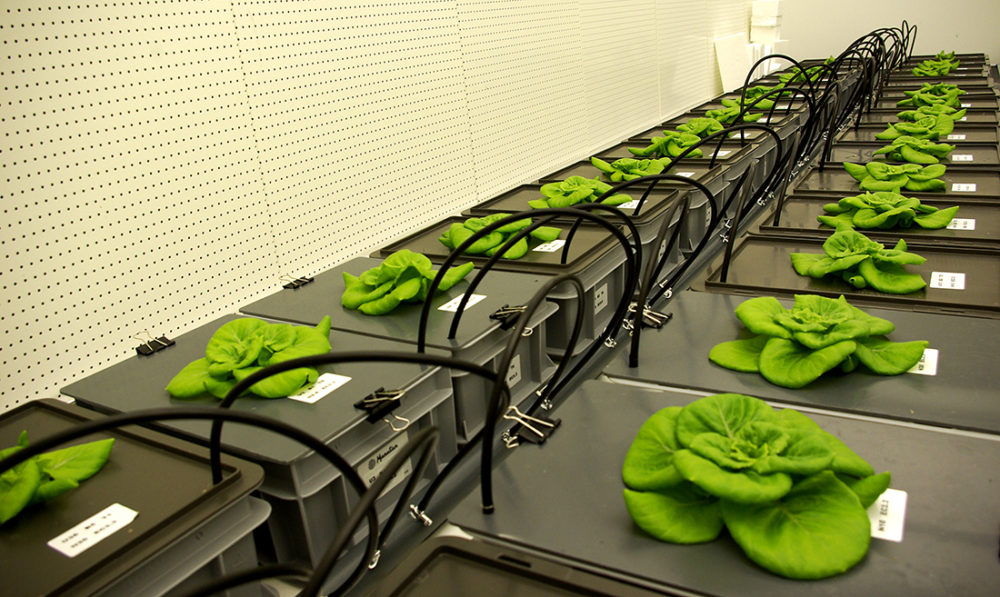
Wolff found that the plants can “smell” how much nutrition is available when she ran experiments in climate-regulated growth chambers in the Netherlands. Photo: Silje Wolff
Plant respiration different than on Earth
“The stationary air affects a layer on the underside of the leaf where the stoma pores are located. When gravity disappears, the boundary layer in the slit-shaped apertures thickens. This reduces evaporation and causes the leaf temperature to increase. Water vapour diffusion to the environment is an important part of plant regulation and can be compared with sweating to cool the body in humans and animals,” says Wolff.
The art of getting something to grow in space can be transferred to our planet.
Food production in cities offers an opportunity to produce more food in the most sustainable way. Cities don’t have much soil for cultivation, but a lot becomes possible if you can plant directly in water in indoor closed systems where all aspects of the climate are regulated.
Urban farming underground
“Recycling and precise fertilization are key to achieving more sustainable food production. By growing plants directly in water with dissolved nutrients, fertilization and irrigation are much easier to control,” says Wolff.
“The plants become less sensitive to nutritional deficiency because the roots are in direct contact with the nutrients. They’re always able to access new nutrients through the water, and can use absolutely all the nutrients available – unlike with soil that binds the nutrients and affects their availability to the roots. And the roots don’t rot when the water is mixed with a little oxygen,” she says.
